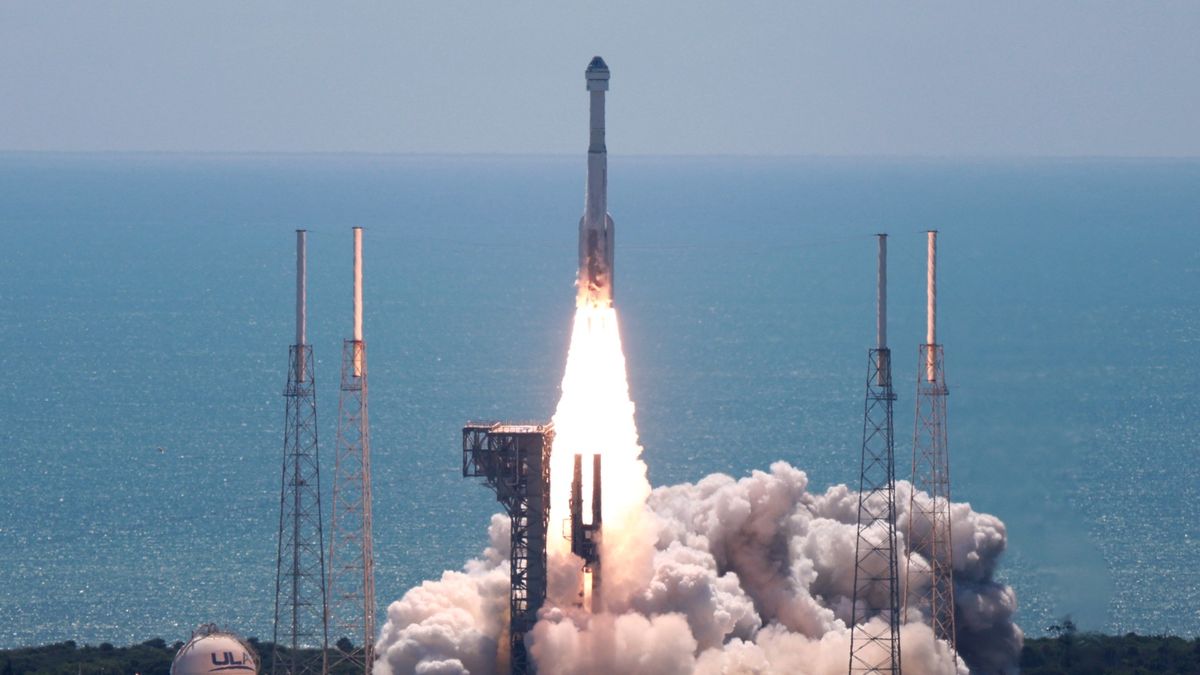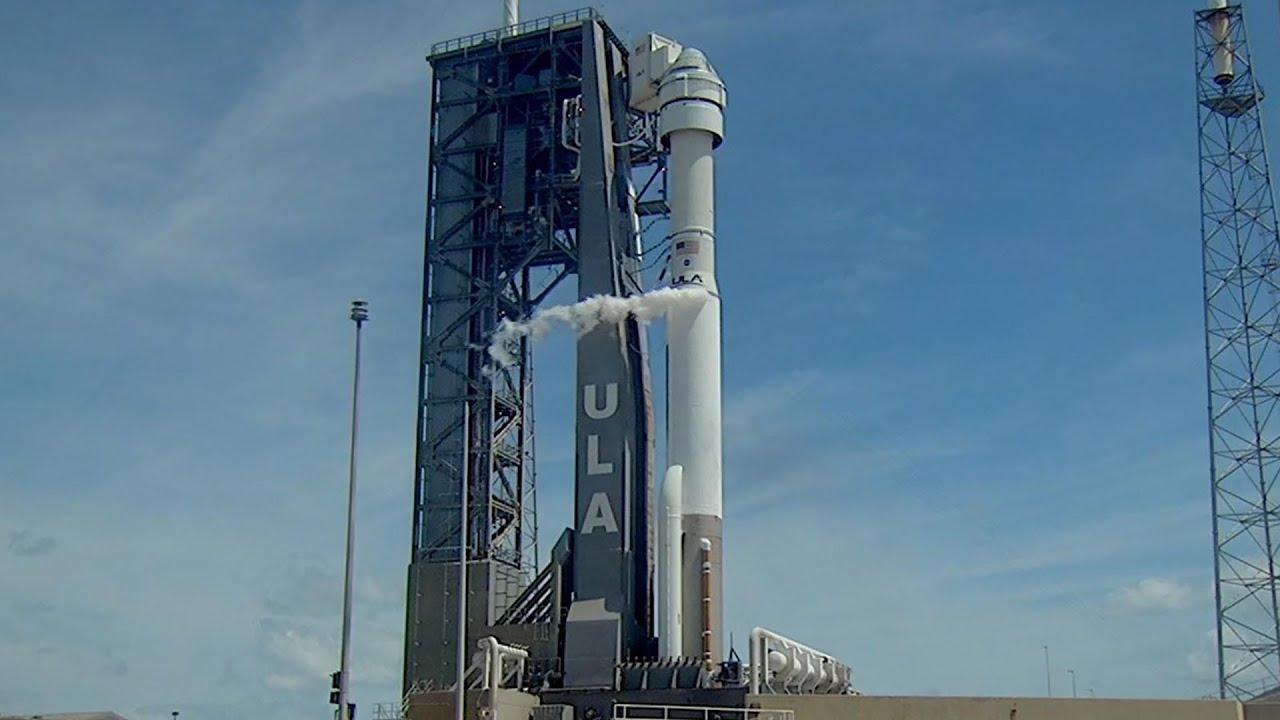Boeing Starliner Launch Details

Boeing starliner launch – The Boeing Starliner is a reusable spacecraft designed to transport crew and cargo to and from low Earth orbit (LEO). It is being developed by Boeing as part of NASA’s Commercial Crew Program.
The Starliner is a cone-shaped spacecraft with a diameter of 4.5 meters (14.7 feet) and a height of 5.6 meters (18.4 feet). It has a mass of approximately 13 metric tons (14.3 short tons) and can carry up to seven crew members or a combination of crew and cargo.
The Starliner is launched into orbit by a United Launch Alliance (ULA) Atlas V rocket. The Atlas V is a two-stage rocket with a solid rocket booster (SRB) first stage and a Centaur upper stage. The SRB provides the initial thrust for the launch, while the Centaur upper stage provides the final boost to insert the Starliner into orbit.
The Starliner’s first test flight, uncrewed Orbital Flight Test-2 (OFT-2), was launched on May 19, 2022. The OFT-2 mission was successful, and the Starliner docked with the International Space Station (ISS) on May 25, 2022. The Starliner remained docked to the ISS for five days before undocking and returning to Earth on May 29, 2022.
The Starliner is scheduled to make its first crewed flight, Crew Flight Test (CFT), in 2023. The CFT mission will carry four astronauts to the ISS for a six-month stay. The Starliner is also expected to begin regular operational flights to the ISS in 2024.
Mission Highlights and Challenges
The Boeing Starliner mission carries significant scientific experiments and payloads, while also facing potential risks and challenges. Its success will contribute to the advancement of space exploration.
Scientific Experiments and Payloads
- CREW Health and Performance Experiment (CHAPEx): Studies the effects of spaceflight on astronauts’ health and performance.
- Passive Dosimeter for Life Science Experiments (PaDS): Measures radiation exposure to biological samples.
- Environmental Control and Life Support System (ECLSS) Water Recovery System (WRS): Tests a new water recycling system for long-duration space missions.
Risks and Challenges
- Launch Vehicle Failure: Malfunctions in the Atlas V rocket could prevent the Starliner from reaching orbit.
- Spacecraft System Failures: Issues with the Starliner’s propulsion, navigation, or communication systems could jeopardize the mission.
- Docking with the ISS: Successful docking with the International Space Station is crucial for the mission’s objectives.
Significance for Space Exploration, Boeing starliner launch
The Boeing Starliner mission is a critical step in the development of commercial spaceflight capabilities. Its success will enable NASA to rely on private companies for astronaut transportation to the ISS, freeing up resources for other space exploration endeavors.
Comparative Analysis with SpaceX Crew Dragon: Boeing Starliner Launch

Boeing Starliner and SpaceX Crew Dragon are two spacecraft designed to transport astronauts to and from low Earth orbit (LEO). While both spacecraft share some similarities, there are also some key differences between the two. In this section, we will compare the design and capabilities of the Starliner and Crew Dragon, analyze the different approaches taken by Boeing and SpaceX in developing their spacecraft, and discuss the implications for the future of commercial spaceflight.
Design and Capabilities
The Starliner is a capsule-shaped spacecraft that is designed to carry up to seven astronauts. The spacecraft is made up of two modules: a crew module and a service module. The crew module is where the astronauts live and work during the mission, while the service module provides power, propulsion, and life support. The Starliner is launched into orbit on a United Launch Alliance Atlas V rocket.
The Crew Dragon is also a capsule-shaped spacecraft, but it is slightly larger than the Starliner. The Crew Dragon can carry up to seven astronauts, but it is typically configured to carry four astronauts. The spacecraft is made up of two modules: a crew module and a trunk. The crew module is where the astronauts live and work during the mission, while the trunk provides storage for cargo and supplies. The Crew Dragon is launched into orbit on a SpaceX Falcon 9 rocket.
Both the Starliner and Crew Dragon are equipped with a variety of safety features, including redundant systems, escape hatches, and abort systems. The Starliner also has a unique feature called the “Boeing Advanced Crew Escape Suit” (ACES), which is designed to protect the astronauts in the event of an emergency.
Different Approaches
Boeing and SpaceX took different approaches to developing their spacecraft. Boeing opted for a more traditional design, while SpaceX opted for a more innovative design. The Starliner is based on the design of the Apollo spacecraft, while the Crew Dragon is based on the design of the SpaceX Dragon cargo spacecraft.
Boeing’s approach was more conservative, while SpaceX’s approach was more ambitious. Boeing wanted to minimize risk, while SpaceX was willing to take more risks in order to achieve its goals. This difference in approach is reflected in the design of the two spacecraft. The Starliner is a more conventional spacecraft, while the Crew Dragon is a more advanced spacecraft.
Implications for the Future
The Starliner and Crew Dragon are both important milestones in the development of commercial spaceflight. These spacecraft are paving the way for a new era of space exploration, in which private companies will play a leading role. The success of the Starliner and Crew Dragon will help to make space travel more affordable and accessible, and it will open up new possibilities for space exploration.